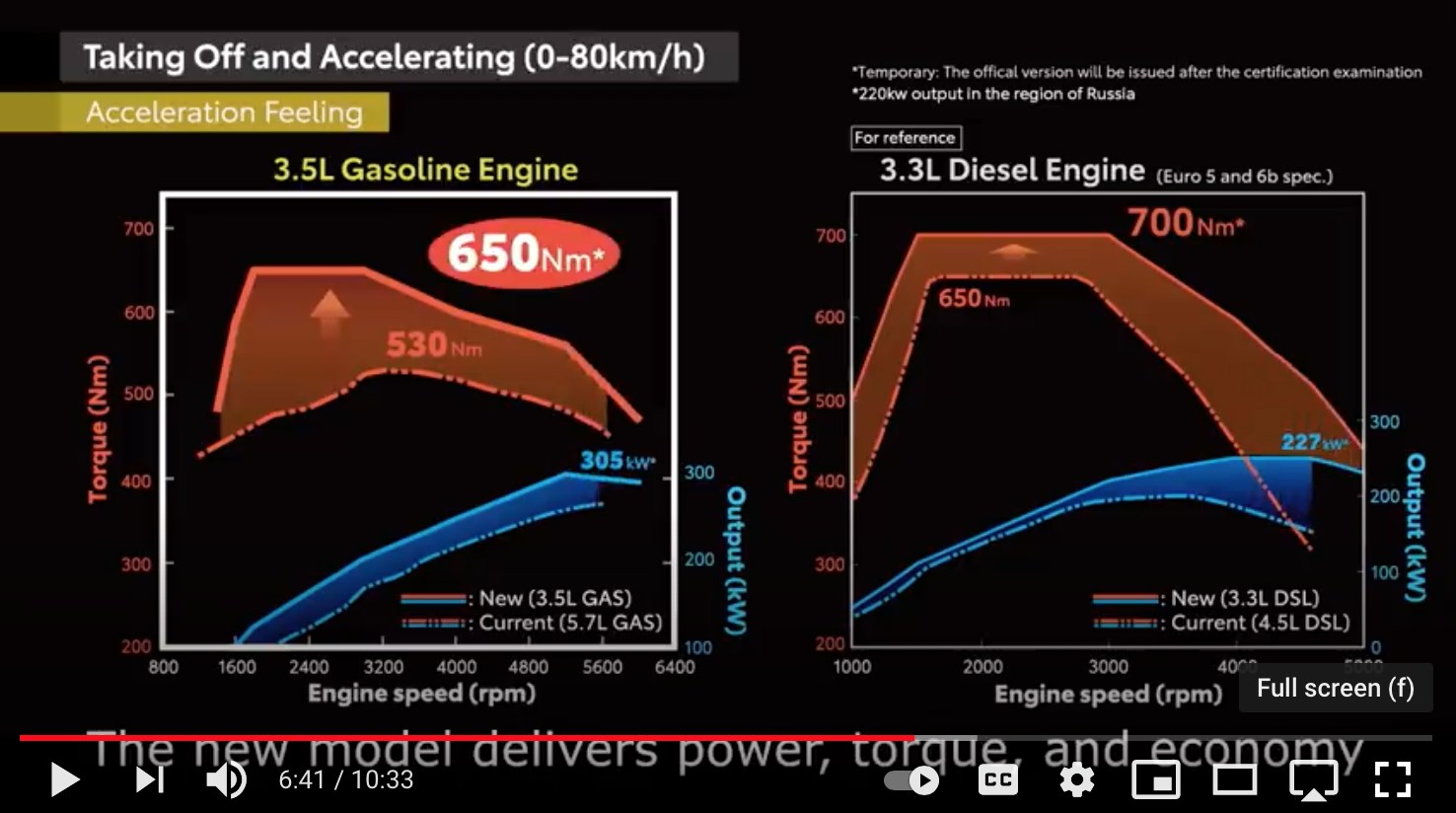Toyota's new (not for the U.S.!) 3.3-liter V6 turbodiesel
Along with the near simultaneous announcements that Toyota would be pulling the Land Cruiser from the U.S. Market while introducing the completely redesigned 300 Series Land Cruiser elsewhere, the company also announced a brand new engine for the updated model. Replacing the existing 4.5-liter, twin-turbo V8 is a 3.3-liter, twin sequential turbo V6. This is Toyota’s first diesel V6.
Reflecting the advances in turbodiesel technology, the new engine boasts increased power and torque compared to its significantly larger predecessor—304 horsepower and 516 lb./ft. compared to 268 horsepower and 480 lb./ft.
Just as importantly, and contrary to the fears of those who predicted the smaller engine would have a torque peak higher in the RPM range, the 3.3’s curve peaks in more or less exactly the same range as the 4.5, from 1,500 to 2,900 rpm. Note the chart on the right below.
The new engine should exhibit significantly decreased turbo lag, thanks both the the sequential turbo configuration (in which one is set up to provide immediate boost while the other takes over higher in the rev range) and the “hot vee” arrangement of the exhaust.
In contrast to standard V engine construction, in which the intake manifold sits between the cylinder banks and the exhaust exits under the sides of the V, the hot vee turns everything around, siting the exhaust manifolds between the cylinder banks. This drastically shortens the run from the exhaust ports to the turbos.
The 4.5 was known for—depending on your point of view—underwhelming specific power output, or being admirably under-stressed for heavy-duty use. The 3.3 is obviously tuned to a higher level, but much of that might be attributed to the configuration. The 4.5 also had a few problems, at least early on, with disappointing oil consumption (although I only read about this in connection with the single-turbo version in the 70-Series vehicles).
I’ve not yet read anything regarding the new engine’s fuel-delivery system—or, more to the point for overland travelers who rightly view the 70-Series vehicles as the ultimate global expedition platforms—whether or not it will be installed in the Troop Carrier and its brethren.


